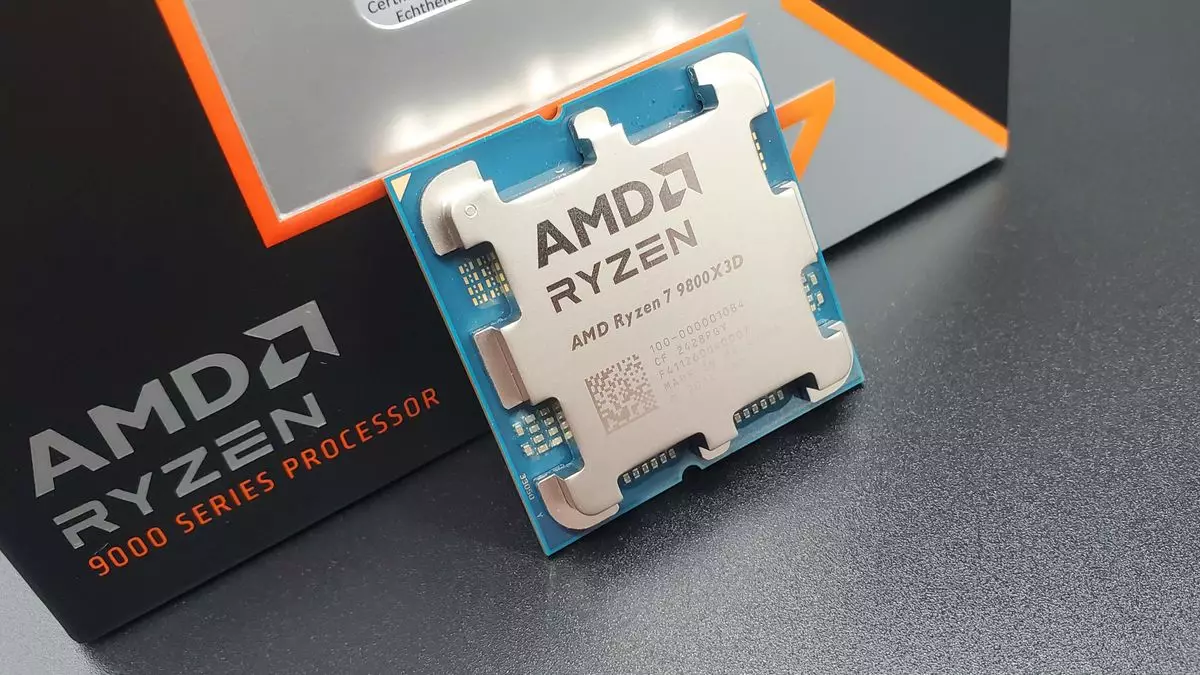In the rapidly evolving world of computing hardware, the focus frequently oscillates between GPUs and CPUs, with new technologies and architectures being unveiled regularly. As 2024 progresses, the spotlight currently shines on the new CPU line-ups from both AMD and Intel. AMD appears to be riding a wave of success with its recently launched 9000-series ‘Zen 5’ processors, while Intel’s Core Ultra 200S ‘Arrow Lake’ CPUs have received a more lukewarm reception. Analyzing these developments reveals insights not just about the products themselves but about the shifting dynamics of competition in the semiconductor industry.
AMD’s recent earnings call indicated a significant triumph, claiming to witness their highest product sell-out in years during the holiday season. CEO Dr. Lisa Su heralded the strong demand for their new gaming CPUs, particularly the Ryzen 7 9800X3D, which has been hard to find at fair prices since its debut. While sell-out rates can often result from both high demand and low supply, AMD’s assertion points towards genuine market enthusiasm, as indicated by their robust shipping performance through January. This scenario diverges sharply from other product launches that have been criticized for simply creating an illusion of availability, echoing the controversies surrounding the Nvidia RTX 5080 and RTX 5090 launches.
However, while AMD basks in the glory of its CPU success, its graphics division faces headwinds. The pending releases of the RX 9070 and RX 9070 XT will be telling, as AMD grapples with the end of a GPU generation and seeks to maintain momentum. Nevertheless, the success of AMD’s CPUs is noteworthy, especially given the competitive landscape. The Ryzen 7 9800X3D has emerged as a clear leader in the gaming domain, with its performance outpacing alternatives from Intel. For now, statistics suggest a favorable market environment for AMD, though future product introductions will indeed shape the broader narrative.
In stark contrast to AMD’s triumphs, Intel’s latest Core Ultra 200S ‘Arrow Lake’ line-up has not set the industry on fire. Reviewers have cited disappointing performance coupled with lingering issues related to the instability of previous generations, raising questions about Intel’s innovation and responsiveness to market demands. While Intel boasts a solid legacy in gaming CPUs, the latest offerings have struggled to captivate the same level of excitement as AMD’s new releases.
This situation sheds light on deeper systemic issues within Intel’s product strategy. Historically, Intel has been revered for its prowess in CPU development, but consistently falling short of expectations could signify not only growing pains in the face of competition but also potential market miscalculations. While the Core Ultra 200S models are designed for efficient performance, their lack of compelling features or eye-catching improvements in gaming capabilities has led many to believe they are inadequate against what Ryzen has to offer. The looming question remains: can Intel pivot swiftly enough to regain market share, or will it cede further ground to AMD?
As the rivalry extends to mobile processors, AMD is also making significant strides with its AI 300 ‘Strix Point’ series. These chips are gaining traction in laptops and unique handheld devices, reflecting AMD’s aggressive expansion strategy in the mobile ecosystem. Intel is not without its advancements, as demonstrated by its Lunar Lake processors integrated into high-performance mobile systems such as the MSI Claw 8 AI+.
However, reports have suggested that while Lunar Lake processors focus on power efficiency, they often do not measure up against the performance metrics set by AMD’s offerings for gaming. This front provides a different battleground for both companies, and the competition appears to be much tighter in this sector than in desktops. Dr. Su’s projection of continued performance beyond typical seasonal fluctuations indicates confidence in AMD’s forthcoming offerings.
As we progress further into 2024, the competition between AMD and Intel stands at a pivotal point. AMD’s recent successes in CPU launches breathe new life into its brand, setting a challenging bar for Intel to meet, particularly with its gaming-centric products. Conversely, Intel’s struggles point to a critical need for introspection and innovation within its ranks.
Moving forward, consumer preferences and technological advancements will dictate how the dynamics evolve, and both companies must adapt accordingly. The anticipation of new releases and shifts in consumer demand will be pivotal in determining the next chapter in this enduring rivalry, keeping enthusiasts on the edge of their seats as the battle for supremacy in the CPU market intensifies.


Leave a Reply